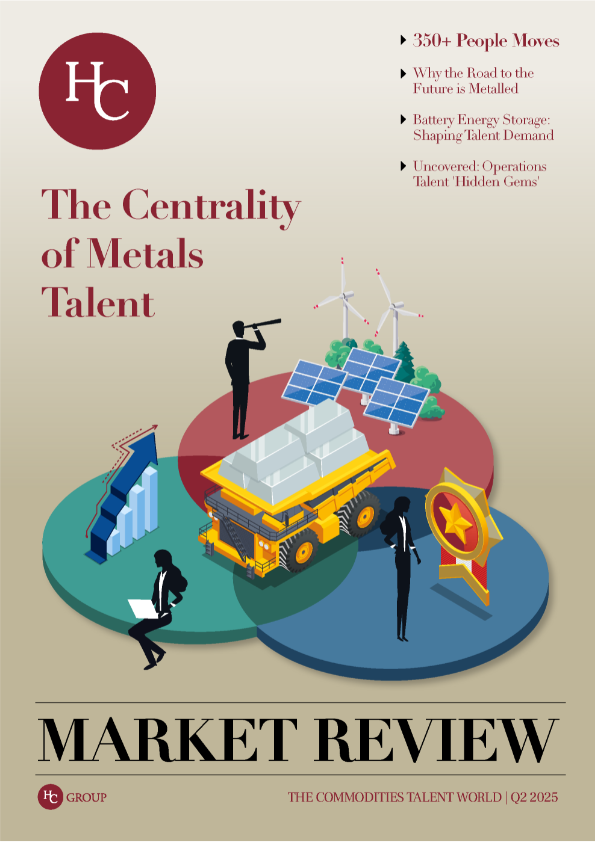At the centre of a Venn diagram of energy security, economic security, and the energy transition sits metals - and the people who power the industry - argues Paul Chapman HC Group's Managing Partner.
This article was originally published as part of HC Group's Q2 Market Review. Access the full magazine here to read Paul's editorial.

Explore 48 pages of commodities talent insights
350+ people moves, talent analysis and insights from our global network of specialist consultants.
Metals' Moment
I recently watched two seasoned US Senators present forcefully and cogently on the need for the United States to develop robust, resilient metals and minerals supply chains, both domestically and with key allies. The Republican's reasoning emphasised economic and military security. The Democrat focused on its role within the energy transition. Similar debates are playing out across the developed world.
And that is the key point. As the front cover of our recent Q2 Market Review shows - at the centre of the Venn diagram of energy security, economic security, and the energy transition sits metals.
Race for Resources
The story is well developed. Vast quantities of copper are needed to reshape and renew legacy power grids to meet our AI-powered, electrical future. Alumin(i)um and titanium are required to make transport lighter and more efficient (batteries are heavy). A host of critical minerals are needed for optics, semiconductors, robotic vacuums, F35s and basically everything else. The circular economy is in vogue.

Miners, refiners, processors and OEMs need - and in many cases are creating - teams with the capabilities to navigate this path
Energy-focused trading houses have seen the writing on the wall and spent much of 2024 competing to build metals trading teams, scrap and recycling capabilities and to invest in battery energy storage businesses.
Interests Aligning
The challenge lies in the risks of delivering multiple new supply-chains. Some are inherent and intractable – low volumes in the case of critical minerals, changing chemistry in the case of batteries, and the incumbents’ ability to flood the market and depress prices in the case of economics. Others are very much political - in the case of regulation and permitting of new mines and processors.
All require various levels of policy support - which is where the politicians come in. Policy volatility is painful – see the Inflation Reduction Act saga in the US. And, after all, developing these supply chains takes much longer than four or five years. But perhaps that Venn diagram centre might hold - now that interests are aligned.
Impacts for Talent
What does this all mean for people and skillsets?
Across the supply-chain, miners, refiners, processors and OEMs need (and in many cases are creating) teams with the capabilities to navigate this clear path. Commercial and corporate development teams are being expanded to forge relationships in new regions and commodities. Traders and marketers who can mitigate risks and navigate a volatile and uncertain world are in demand. So too are technologists who can partner with customers on future needs (as well as build the trading and marketing risk platforms to cope with vastly more complex supply chains and pricing). Likewise, governmental relations teams to work much more closely with policy makers and regulators to understand and participate in decisions.
As with supply chains, commercial capabilities and global trading and marketing footprints take years to build. And those miners, processors and end users who are not thinking about this now may regret that in future years.

